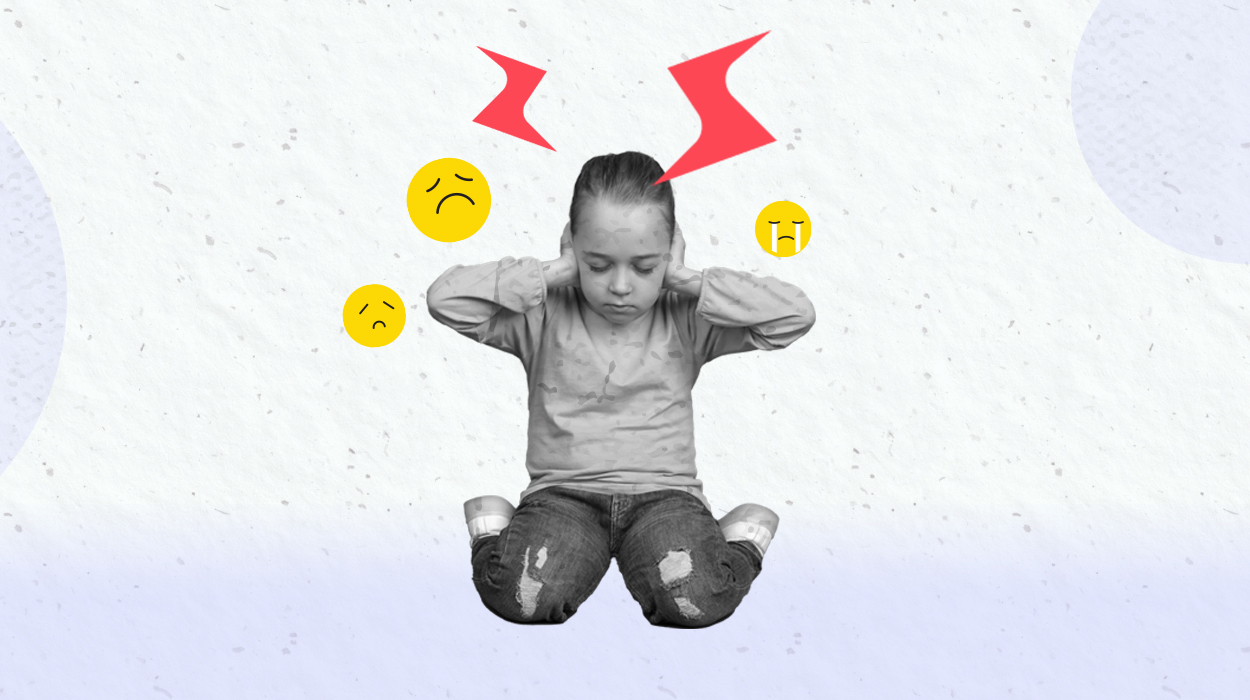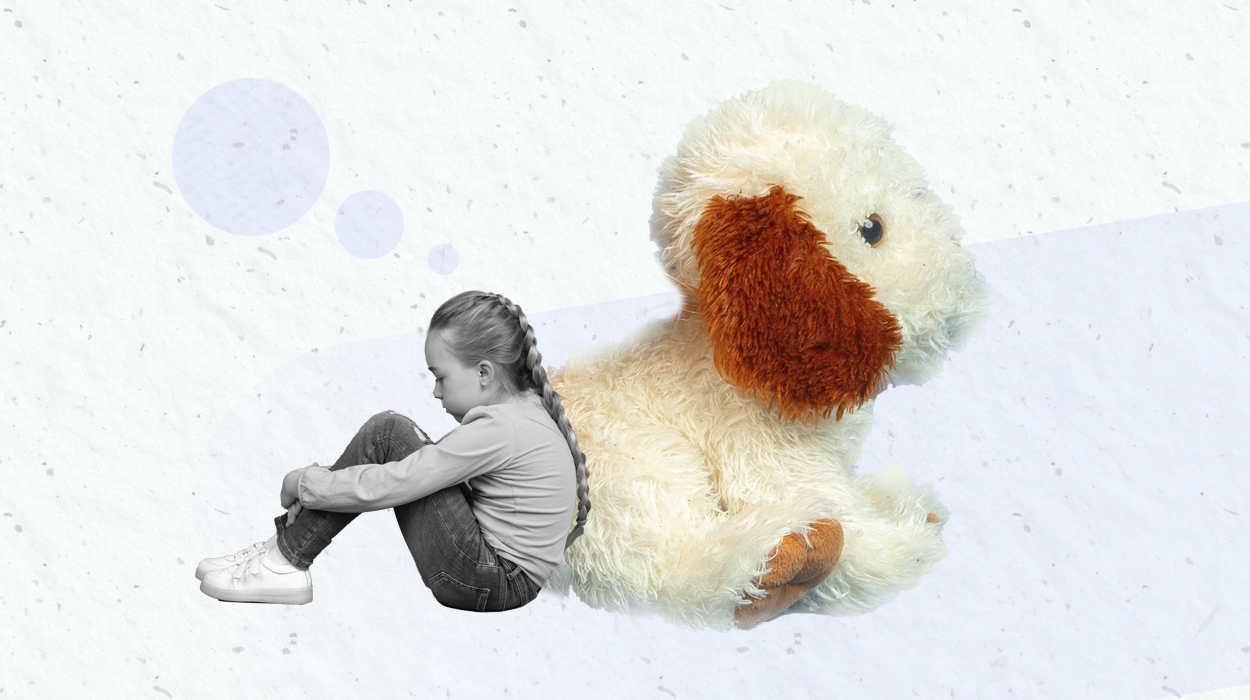 Expert's opinion
Expert's opinion
Expert's opinion
The article is a subjective view on this topic written by writers specializing in medical writing.
It may reflect on a personal journey surrounding struggles with an illness or medical condition, involve product comparisons, diet considerations, or other health-related opinions.
Although the view is entirely that of the writer, it is based on academic experiences and scientific research they have conducted; it is fact-checked by a team of degreed medical experts, and validated by sources attached to the article.
The numbers in parenthesis (1,2,3) will take you to clickable links to related scientific papers.
13 Signs Of Autism In School-Age Children – 2024 Updated

Anyone who is around children regularly has heard about the surge in diagnoses[1] of autism spectrum disorder. ASD is affecting more young people and their families every day. While children with autism spectrum disorders do face challenges, there are many ways we can help them such as changes in eating habits, exercise, enhancing your communication skills, or using CBD oil. Spotting children with autism spectrum disorder is essential in getting them help as soon as possible.
A child may exhibit any one of these indicators and not be on the autism spectrum. Even adults do some of these things once in a while. When you see a few of these indicators together, however, it’s more likely that these are the child’s symptoms of autism spectrum disorder. If these behaviors go on for a while and repeat frequently, the probability goes up as well.
Indicators Of Autism In School-age Children
It can be helpful to look for specific indicators, specific behaviors that children perform regularly. Those indicators include [2]:
- Avoiding eye contact
- Seeking solitude
- Difficulty discussing feelings, their own and others
- Say words or phrases repetitively, known as echolalia
- Flap their hands, rock repetitively, or spin in circles
- Have disproportionate or odd reactions to sounds, smells, tastes, or other sense stimulation
- Delay of speech, intellectual or language impairment
- Have obsessive interests
- Have trouble understanding personal space and other people’s facial expressions
- Dislikes physical contact
- Has difficulty with jokes and sarcasm
- Doesn’t play pretend
- Doesn’t wave goodbye or use other gestures
Signs of Autism Spectrum Disorder
It’s possible to divide up the indicators of autism into a few categories to make them a little easier to understand and look for. A child can be diagnosed with autism if they face difficulties with communication or in social situations and exhibit repetitive behavior.
Difficulty With Social Communication
Many school-age children have a hard time interacting socially. Anyone who has had an enthusiastic conversation with a seven-year-old can tell you that. Many children learn the basics of how to get along with others from their families, friends, and playmates. When they get old enough to enter school, however, they face social challenges of a whole different type.

All of which is to say, it’s not strange to see a child avoid eye contact. Many young children may be more prone to waving their arms and jumping around. All of these things are on the list of indicators. Children with autistic disorder face more severe social challenges,[3] however.
There are a couple of key points to keep in mind when trying to spot autistic spectrum disorder in school children. These are two things that a health professional will look for before making a formal diagnosis, so it can be helpful to understand what they are looking for. Those two things are:
Behavior persisting over a period of time
As we’ve discussed, any kid might be shy when meeting new people. Burning off some excess energy by spinning until they are dizzy is not exactly a rare thing for kids to do, either. However, the behavior and body language that indicate autism will continue over a period of time.
We mean that in two ways. First, one ‘session’ of this repeated behavior might last for a noticeably long time, longer than if they were just being goofy. Alternatively, the behavior may pop up recurrently. For example, when a child flaps their arms frequently over a short period.
Persistent behavior also means that it will happen again and again over a longer period. If every time you see a child for a week or a month they make loud noises, flap their hands, or rock repetitively, that might be an indicator of ASD.
Behavior that interferes with the basics of life
At the most basic level, the ‘disorder’ part of autism spectrum disorder means that it’s a condition that makes life difficult. A child might be shy at the first meeting and have a hard time playing with same-age peers (child’s poor social skills,[4]).
If a child starts having a genuinely difficult time communicating (nonverbal autism), that can have a long-lasting impact on their life.
Repetitive Behavior
We’ve talked a lot about behavior that reoccurs frequently. Repetitive behavior,[5] refers to specific types of behaviors, however. It can be the sort of thing that we jokingly refer to as ‘being a bit OCD”, such as lining things up in a specific way. It can also be things like playing with a specific toy and no other. Kids with ASD may need to stick to a routine to feel comfortable.
They might also form something called ‘repetitive interests’,[6]. That is a focus on one or a few topics, to the exclusion of anything else. With these, you’ll also want to follow the two guidelines above, looking for behavior that persists and that interferes with life.
Other Symptoms – Autism Spectrum Disorder
Poor social skills and repetitive behavior are both what defines autism spectrum disorder. However, there is a range of other things to look,[7] that can also point to autism spectrum disorder. They can also point to other conditions, like ADHD.
Some of these behaviors are also the result of frustrations children on the autism spectrum experience. It’s not uncommon for them to experience both anxiety and depression. Other indicators are common to children on the autism spectrum disorder for reasons we don’t yet understand.
These sorts of symptoms can include:
- Hyperactivity
- Short attention span
- Aggression and tantrums
- Impulsivity
- Self-injury
- Disproportionate fear response (too much fear or too little fear)
- Other unusual emotional reactions
- Odd sleep habits
- Odd eating habits
Some of those symptoms, for example, self-injury and disproportionate fear response, are big red flags. In most cases, contacting a medical professional is the next step.
How to Share Your Concerns About Autism With A Parent?

If there is a child in your life that has exhibited some of the behaviors we’ve discussed. Quite naturally, you want to help. The person best placed to help that child is their parent, however, so your first step should be to share your concern with a parent.
This may be a daunting prospect since it does mean telling a parent their child will face additional challenges. No one wants to be the bearer of bad news, but the most important thing is helping the child who may have autism spectrum disorder.
There are a few things to keep in mind when sharing your concerns about autism. A few guidelines can help you plan a difficult conversation and be prepared for the inevitable questions.
Do Some Research
You’re reading this, so you’re already on the right track. It’s important to know what you’re talking about. Make sure to check your facts and try to have some specific examples.
Prepare A Plan
Giving a concerned parent some sort of road map,[8] to follow can be important, even if they don’t necessarily follow it. Health professionals need to be consulted and there are a few tests to be done. A child with autism spectrum disorder needs some support from their family. Their family may need some support from you.
Keep It Light And Positive
A potential diagnosis will be a big deal if you make it a big deal. While it’s true that a child with autism spectrum disorder will face challenges, there is a lot more help out there as more kids are diagnosed.
Be Sensitive
By the same token, it can be upsetting to be told your child has an autism spectrum disorder. Support can also mean sympathy and understanding, as well as offering a helping hand.
Know When To Stop
It’s impossible to guess what reaction a parent might have. They might be upset. They might even get angry. Try not to take it personally. There also may come a point when more discussion is no longer helpful. At that point, it may be best just to take a step back.
The possibilities for helping school-age children with autism spectrum disorder are growing every day. The sooner they can receive the benefits of that help, the less they may struggle throughout the rest of their life. Spotting a child who may have autism spectrum disorder is the first step in helping them be a happier and more fulfilled person.
+ 8 sources
Health Canal avoids using tertiary references. We have strict sourcing guidelines and rely on peer-reviewed studies, academic researches from medical associations and institutions. To ensure the accuracy of articles in Health Canal, you can read more about the editorial process here
- CDC (2023). Data & Statistics on Autism Spectrum Disorder. [online] Centers for Disease Control and Prevention. Available at: https://www.cdc.gov/ncbddd/autism/data.html.
- Autism Speaks. (2023). Learn the Signs of Autism | Autism Speaks. [online] Available at: https://www.autismspeaks.org/signs-autism.
- CDC (2023). Signs and Symptoms of Autism Spectrum Disorders. [online] Centers for Disease Control and Prevention. Available at: https://www.cdc.gov/ncbddd/autism/signs.html.
- Choi, D.H. and Md-Yunus, S. (2011). Integration of a social skills training: a case study of children with low social skills. Education 3-13, 39(3), pp.249–264. doi:https://doi.org/10.1080/03004270903501590.
- Nationalautismassociation.org. (2020). Signs of Autism | National Autism Association. [online] Available at: https://nationalautismassociation.org/resources/signs-of-autism/.
- Caldwell-Harris, C.L. (2021). An Explanation for Repetitive Motor Behaviors in Autism: Facilitating Inventions via Trial-and-Error Discovery. [online] 12. doi:https://doi.org/10.3389/fpsyt.2021.657774.
- Jobs, E., Sven Bölte and Terje Falck-Ytter (2018). Spotting Signs of Autism in 3-Year-Olds: Comparing Information from Parents and Preschool Staff. [online] 49(3), pp.1232–1241. doi:https://doi.org/10.1007/s10803-018-3821-5.
- Association for Science in Autism Treatment. (2022). Discussing Concerns with Family Members. [online] Available at: https://asatonline.org/research-treatment/clinical-corner/discussing-concerns-with-family-members/.



